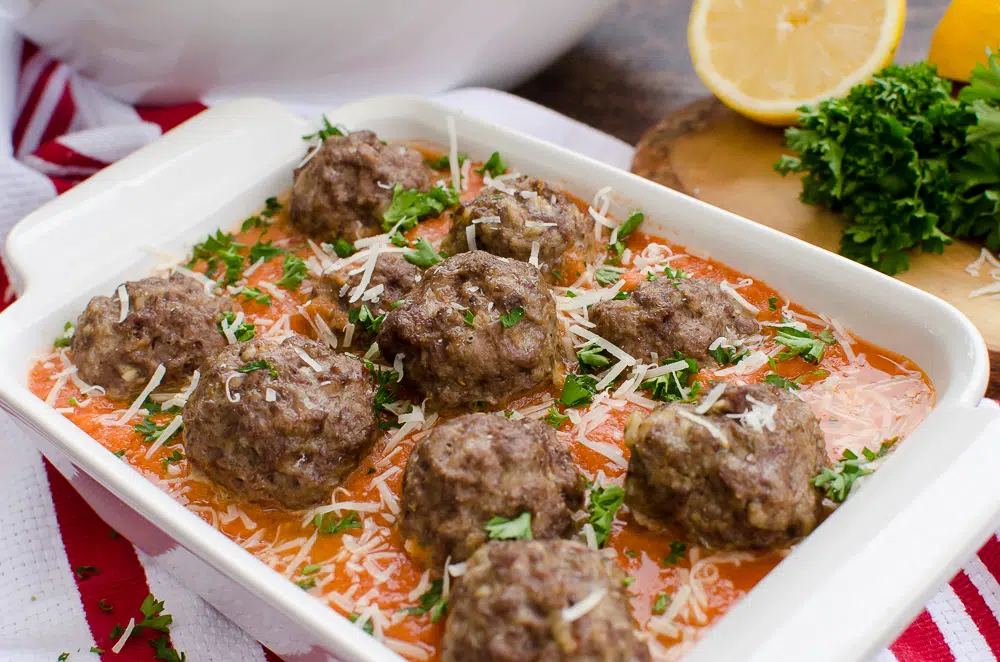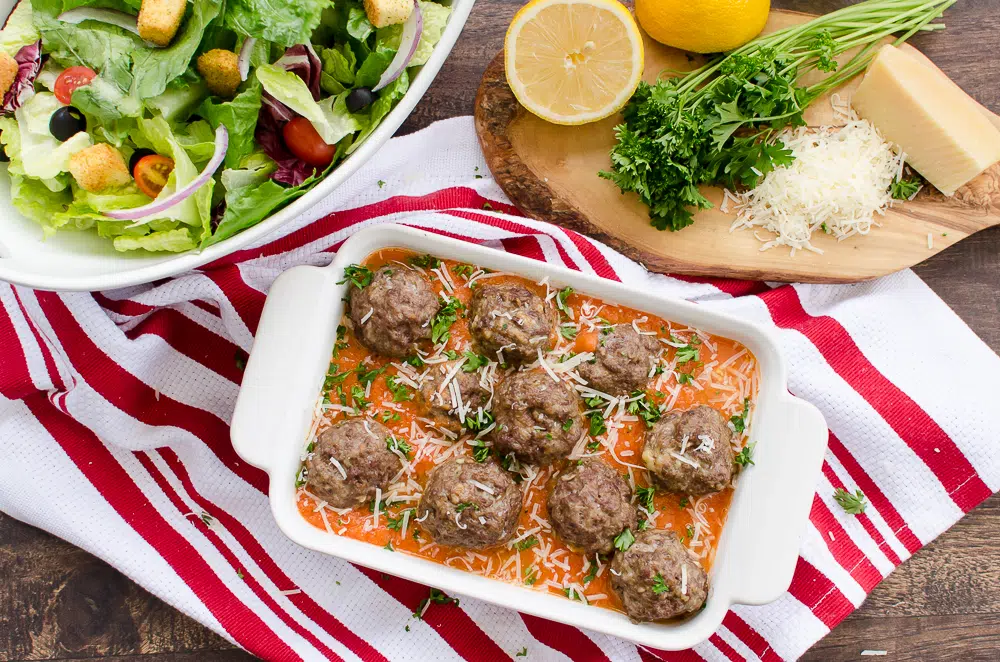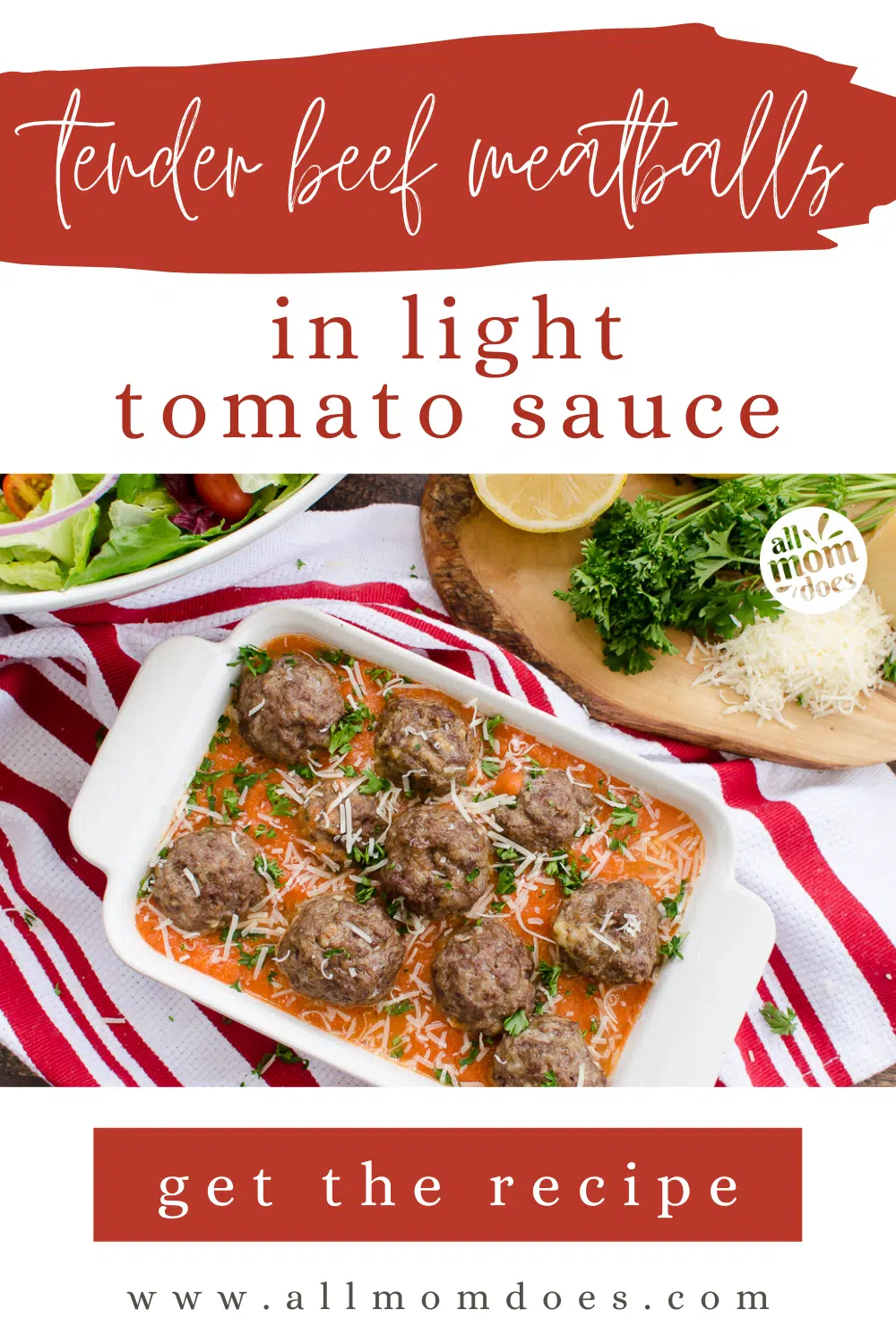If one of your goals for this year is to improve your eating habits, make sure you include beef in your eating plan. Here’s why.
This post is sponsored by the Washington State Beef Commission.
Nutrition: When you’re trying to get healthy, it’s easy to focus on a singular nutritional element of your food – like calories, carbs, protein, or fat content. But there’s so much more that your body needs, and beef gives you a big bang for your nutritional buck. In fact, a 3-ounce serving of beef gives you many of the nutrients you need for daily life in a modest little 175-calorie package. These include:
- Protein (51% of your daily value): Protein is needed for muscle development, supports brain and immune system function, and helps maintain a healthy body weight.
- Iron (14% of your daily value): Iron helps deliver oxygen from your lungs to every cell in your body. It’s essential for energy, growth, and proper functioning.
- Zinc (39% of your daily value): Zinc is necessary for brain function, and it also supports the immune system.
- Selenium (38% of your daily value): Selenium has a role as a primary antioxidant in the liver, helping to detoxify the body. It’s also important for proper immune, thyroid, cardiovascular, and digestive functioning.
- Vitamin B6 (24% of your daily value): Vitamin B6 influences cognitive development, immune function, and hormone activity.
- Niacin B3 (25% of your daily value): This helps the body produce energy from food and promotes healthy skin, nerves, and digestion. It also helps to foster a normal appetite.
- Riboflavin (14% of your daily value): This helps support normal vision and healthy skin.
- Vitamin B12 (41% of your daily value): This is an essential nutrient in developing red blood cells, and supports brain development in young children.
- Choline (13% of your daily value): The brain and nervous system need choline to regulate memory, mood, muscle control, and other functions.
- Phosphorous (20% of your daily value): While its main function is the formation of bones and teeth, phosphorous also helps make protein for the growth, maintenance, and repair of cells.
Health: Lean beef’s role in a healthy diet is backed by research. People in Mediterranean countries eat as much red meat (or more!) as people in the US, but pair it with more healthy fats, whole grains, and fresh vegetables. Studies have shown that following a Mediterranean eating pattern while incorporating up to 18 ounces of lean beef each week supports heart health just as effectively as a Mediterranean Diet that limits red meat.
Satiety: Protein helps keep those hunger pangs at bay! When you include high-quality protein like beef in your diet, you feel full longer and avoid unnecessary snacking (and empty calories). Plus, with all the ways you can prepare beef, you’re emotionally satisfied with your meal as well. When you don’t feel restricted, you don’t crave the junk.
Variety: There are so many ways to prepare beef. You’ll never get bored of eating the same thing over and over. Burgers, meatballs, roasts, steaks, sandwiches, casseroles, stir-fries, stews, soups…the possibilities are endless. There’s something for every palate.
Ease: Beef is well-suited for quick-cooking or convenience-cooking methods. Ground or shaved beef cooks up in minutes. Roasts can be cooked in the slow cooker or Instant Pot. Pre-form it or marinate it in advance to make weeknight cooking a breeze. It’s perfect for the busy mom who doesn’t have time to spend hours in the kitchen.
Family-Friendly: The value of having a meal around the table together is backed by research. It’s not only linked to positive behavioral outcomes with kids, but also promotes a child’s healthy relationship with food. When you serve food like beef, it meets the nutritional needs of everyone in the family, from nutrition-conscious parents to growing teens to picky toddlers to developing babies. With the right recipes, everyone can sit around the table and eat the same thing. Because mom, we know you’re tired of being a short-order cook.
Tender Oven-Baked Meatballs in Light Tomato Sauce

Let me tell you about meatballs. They are one of my favorite meals to serve because they’re always a hit and they fit a wide variety of dietary preferences. Serve them over noodles for a traditional spaghetti dinner, eat them without if you’re limiting carbs, pair them with a salad for a power-packed lunch, or cut them into bite-sized pieces and watch your littlest family member devour them without complaint.
But let me tell you another thing about meatballs. No matter how “easy” someone tells you a recipe is, it’s still going to be a labor of love – though it’s 100% worth it because homemade meatballs are nothing like the ones you’ll find at the store. They’re tender, juicy, flavorful, and fresh-tasting. Pair them with scratch-made tomato sauce for the ultimate family-friendly dinner.
This recipe makes a double batch of meatballs and sauce because they freeze perfectly. Have one batch for dinner tonight, and another ready-made for an effortless meal in the future! Makes 24 generous-sized meatballs.
For the Tomato Sauce:
- 3 lbs Roma tomatoes (You can use other varieties, but Roma tomatoes are ideal for sauce because they have a low water and seed content. They are also most closely related to the tomatoes grown in the San Marzano region of Italy, which are considered the premiere tomatoes for making sauce.)
- 1/4 onion (no need to chop)
- 3 cloves garlic (whole)
- olive oil
- salt & pepper
- pinch of red pepper flakes (optional)
- 1 tsp. lemon juice
Preheat the oven to 400 degrees.
Slice your tomatoes in half lengthwise and scoop out the center section with the seeds.
Place in a glass baking dish along with the onion, garlic cloves and red pepper flakes. Drizzle generously with olive oil, season with salt & pepper, and combine everything well; don’t worry if the tomatoes overlap.
Bake everything in the oven for 30 minutes or until tomatoes, garlic, and onions are tender.
Using kitchen tongs, remove the skins from the tomatoes and discard. They should peel off easily. Don’t worry if you don’t get all the skins; just remove what you can.
Transfer the tomatoes, onion, and garlic cloves to a food processor, blender, or deep glass bowl for blending with an immersion blender. Add lemon juice and puree until smooth. If it’s too thick, add some of the liquid reserved in the bottom of the glass baking dish.
Salt & pepper to taste.
For the Meatballs:
- 2 lbs lean ground beef (90% or leaner)
- 2 slices bread, torn apart into smaller pieces (about 1 cup)
- 1/4 – 1/2 C. milk
- 1 egg
- 1/2 C. shredded parmesan cheese
- 2 cloves garlic, minced
- 1 Tb. fresh grated onion
- 1 tsp. Italian seasoning
- 1 tsp. salt
- 1/2 tsp. pepper
Preheat the oven to 400 degrees.
Combine the bread pieces and 1/4 cup milk in a large mixing bowl. Using a fork, mash the bread and make a panade. (This is a slurry that helps your meatballs retain moisture. You may need to add additional milk or bread for your panade to reach the proper consistency. It should be thick and all the liquid should be absorbed.)
Add the egg and mix well. Stir in the parmesan cheese, garlic, grated onion, Italian seasoning, salt, and pepper. Combine thoroughly.
Gently add your ground beef, breaking it up with your hands as you add it to the bowl. Combine everything by hand, pulling the liquid ingredients up from the bottom of the bowl and folding them into the ground meat. If you vigorously mix or smash your ground meat to combine the ingredients, your meatballs will be dense and tough.
Scoop up about 1/4 cup of the meat mixture and gently form it into a ball. It’s less important to get perfectly round meatballs than it is to keep the meatballs loose so they remain tender and juicy. Get your kids into the kitchen to help you with this part!
Place the meatballs on a parchment-lined rimmed baking sheet. Bake for 15 minutes or until the tops are nicely browned and the meatballs are cooked through. Do not overbake.
If you time it right, you can pop the meatballs in the oven during the last 15 minutes of your tomatoes cooking so everything is ready at the same time.

PIN THIS!
RELATED:
The Mediterranean Diet: What Is It? + Easy Mediterranean Beef Bowls


















